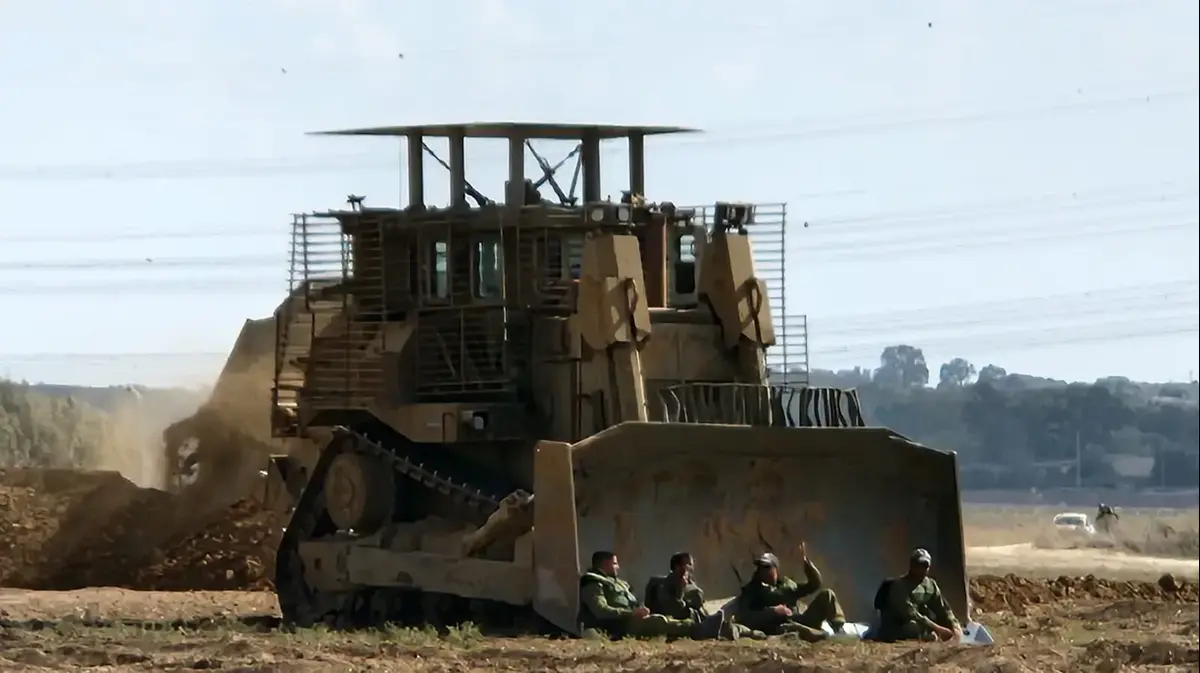Tourism
news
A church from the Byzantine period was discovered in the Banias Springs Reserve
A church from the 4th century AD, which was hit by an earthquake that struck the north of the country and sank in the ground, was recently uncovered in the ancient city of Banias.
The remains of a mosaic floor and a large and unique dressed stone on which many cross marks were engraved with the transformation of Banias into a pilgrimage site were also exposed.
Tags
Archeology
Banias
Ziv Reinstein
Wednesday, October 28, 2020, 8:00 p.m.
Share on Facebook
Share on WhatsApp
Share on general
Share on general
Share on Twitter
Share on Email
0 comments
Rotana Saadiyat Hotel in Abu Dhabi
Netanyahu at the door of the Corona cabinet: The closure is a huge success, ...
An ancient weight of two shekels was discovered next to the Western Wall ...
Digital nomads
Boundary stone at the excavation site in volume
Puma chases after a hiker
Dolphin is found off the coast of Netanya
Before the flight to the Emirates: Kushner visited the Western Wall ...
Etihad Airways lands at Ben Gurion Airport for the first time
The Israeli delegation landed in Bahrain to sign the agreement to establish ...
A shelter that treats and rehabilitates animals rescued from the streets ...
A church from the Byzantine period was discovered in the Banias Reserve (Photo: Yaniv Cohen, Nature and Parks Authority)
A church from the Byzantine period, dating to around the year 400 AD, was discovered in the nature reserve Banias springs (nature reserve Hermon) as part of archeological excavations led by the Department of Archeology of the National Parks Authority and the management of Prof. Adi Erlich and Ron Lavi Zinman Institute of Archeology at the University of Haifa.
Among surprising findings discovered in the excavation, remains of a mosaic floor decorated with crosses and other models and that the researchers speculate that this is a church. also, the exposed cut stone large and unique with the carved cross markings many, probably by the pilgrims who visited the church after it became a place of pilgrimage.
during the excavation also finds Evidence of previous use of the place, as a sacred Roman complex open to the sky for the worship of the god Pan with niches and altars and decorated architectural items.In the center of the complex was also a small pool.
More on Walla!
NEWS
Kfar Kama: A 1300-year-old church was uncovered near Mount Tabor
To the full article
A mosaic cross pattern from the church in the Banias Reserve (Photo: Yaniv Cohen, Nature and Parks Authority)
A large stone that was uncovered and engraved with cross marks as part of the ancient pilgrimage activity at the site (Photo: Yaniv Cohen, Nature and Parks Authority)
More on Walla!
NEWS
"Cultural attack": uprooted a mosaic and destroyed an ancient church in the Galilee
An underwater church from 1600 years ago was unveiled - linking Jesus to God
There are no tourists in the country?
So the Christian churches in Israel are going through Mike Uber
Not just at Corona Time: The medical service that helps heart patients
The church became a pilgrimage site in the 7th century AD
According to scholars, the church, which used pagan architecture, was founded on the site when Christianity became the official religion in Israel in the fourth century AD.
According to unusual slopes and depressions in the mosaic floor and walls of the compound, it is estimated that the church was hit by an earthquake that struck the area and half of it sank.
The church was later renovated in the seventh century by the Christians and became a pilgrimage site.
This, as stated, is based on the large stone with the cross markings found in the excavations.
According to Dr. Yossi Bordovich, head of the heritage department at the Nature and Parks Authority:
The excavations are now intended to complete the exposure of this temple in front of the cave in the reserve, for the purposes of archeological preservation and further tourist development for visitors to the Banias Springs Reserve. "
More on Walla!
NEWS
An underwater church from 1600 years ago was unveiled - linking Jesus to God
To the full article
The cult alcove - apse - and the mosaic floor exposed in the excavations (Photo: Yaniv Cohen, Nature and Parks Authority)
The church was founded in Banias when Christianity became the official religion in Israel (Photo: Banias Excavation Expedition)
In Banias Peter received the keys to heaven
Prof. Adi Ehrlich of the Zinman Institute of Archeology at the University of Haifa explains that:
In the Hellenistic period, in the third century BCE, worship of the god Pan began near the cave and the spring.
Hence also the origin of the name of the ancient city 'Panias' which later changed to Banias.
King Herod built a temple in the area to the emperor Augustus at the end of the first century BC.
His son Philip founded a city called "Caesarea of Philip" at the beginning of the first century AD.
Throughout the Roman period the city was an important center of worship for the gods Pan and Zeus.
"According to the New Testament, here in Banias Peter recognized Jesus as the Messiah, and Jesus gave him the keys to heaven. In the early Byzantine period, around the year 320 AD, the city of Banias became an important Christian center with a bishop and worship gradually changed to Christian. ", But continued to exist throughout history. It was densely populated during the Mamluk period in the 13th century."
The Nature and Parks Authority notes that the excavations now completed at the archeological site are part of a variety of activities carried out by the Authority for the Preservation and Cultivation of Archaeological Finds in Nature Reserves and National Parks and upon completion of the excavations
Share on Facebook
Share on WhatsApp
Share on general
Share on general
Share on Twitter
Share on Email
0 comments









